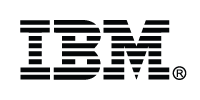Don't Get Fooled: How Procurement Can Spot Counterfeit Components
Download this article in PDF format.
As demand for electronic components increases, the opportunity to develop and sell fake ones is also proliferating. Last year, Electronic Resellers Association International (ERAI) reported a total of 1,055 suspect counterfeit and nonconforming parts—a 25% increase over the previous year and the highest number of parts reported by the organization since 2015.
“The demand for electronic components is steadily increasing as we advance in the development of new technologies, particularly in areas such as consumer electronics, automotive innovations, and industrial automation,” Suntsu Electronics points out in Counterfeit Component Detection: A Guide to Visual Inspection. “This growth has led to a rise in counterfeit components, infiltrating even secure supply chains and posing significant risks to manufacturers and consumers.”
The double-digit increase in counterfeits is being driven by two factors: an increase in reporting correlating to higher global semiconductor sales from 2023 to 2024 ($588 billion in 2024 vs. $526 billion in 2023) and one batch of parts (248) reported by the U.S. government in 2024. “When excluding the batch report, [it reveals] a 3% increase from 2023 to 2024,” ERAI reports. “This 3% increase mirrors the increase in reporting from 2022 through 2023.”
Creating a Strong Defense
With counterfeit electronic components on the rise, a strong defense is crucial. Detection can happen at various points in the supply chain, with procurement often serving as the first and best line of defense. By putting smart strategies in place and staying vigilant, procurement teams can reduce the risk of buying these harmful fakes and nonconforming parts.
“While sophisticated techniques like X-ray analysis and electrical testing are valuable tools in the fight against counterfeits, visual inspection remains the first and most accessible line of defense,” Suntsu says. “A trained eye can often spot telltale signs of counterfeiting, allowing you to quickly identify suspect components and take appropriate action.”
Here are four more steps that procurement departments can take to strengthen their defenses and make sure they’re only buying genuine, quality components:
1) Make your visual inspections count. Suntsu recommends reviewing the font used for component markings. “Ensure it aligns with the manufacturer’s standard font, as counterfeits often display blurry, mismatched, or irregular fonts,” it says. “Pay attention to inconsistencies in kerning (the spacing between letters) and stroke weight.” Also check part numbers, logos, date codes, and look for any missing or obscured markings.
2) Look beneath the surface. In some cases, components could be faked internally. If components pass visual inspection and basic chemical inspections, it may be worth looking internally to see if the component has been faked. In Telltale Signs of Counterfeit Electronic Components, Zachariah Peterson says some of the measures counterfeiters will take to fake components include:
-
- Removing a die from a package
- Using the wrong die in a package
- Shipping a part with a defective die but appears intact externally
- Use of leaded components when lead-free parts were requested
3) Ramp up your testing process. “The consequences of missing a counterfeit component could range from minor annoyance to early failure of a system,” Peterson writes, “so consider what kind of testing regime would be needed for your components.” More specialized inspection requires looking beneath the surface, for example, using approaches like decapsulation (destructive inspection), X-ray inspection, chemical inspection and power-on inspection with a test circuit.
4) Buying online? Do the due diligence first. According to the CBP, online sales have contributed to large volumes of low-value, small packages being imported into the U.S. In fact, it says over 90% of all counterfeit seizures occur in the international mail and express environments, which are channels that small, e-commerce packages destined for the U.S. travel through. “Many of these shipments contain counterfeit goods that pose the same health, safety, and economic security risks as large, containerized shipments,” the CBP adds.
About the Author
Avery Larkin
Contributing Editor
Avery Larkin is a freelance writer that covers trends in logistics, transportation and supply chain strategy. With a keen eye on emerging technologies and operational efficiencies, Larkin delivers practical insights for supply chain professionals navigating today’s evolving landscape.






